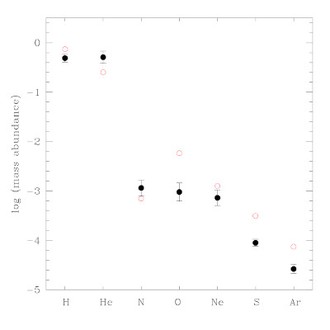
CK Vul or Nova 1670 is an enigmatic eruptive object which underwent a stellar-merger event which was recorded by seventeenth-century observers. Its remnant was recently recovered at submillimeter wavelengths, revealing gas of an extraordinary isotopic composition indicative of past processing in the CNO cycles and partial He burning. Team of astronomers R. Tylenda (CAMK, Toruń), T. Kamiński (CfA) and A. Mehner (ESO) presents long-slit optical spectra of the remnant that were acquired with X-shooter at the Very Large Telescope and at an unprecedented sensitivity and spectral coverage. The spectra covered features of key elements -- including H, He, N, and O -- at ionization degrees I--III. A classical analysis of the spectra allowed them to identify several spatio-kinematic components in the probed part of the nebula at electron temperatures of 10--15 kK and densities of 200--600 cm-3. They find that the nebula is most likely excited by shocks rather than by direct radiation of the stellar remnant. They provide a detailed analysis of the elemental abundances in the remnant and find that helium is twice more abundant than in the Sun. Nitrogen is also overabundant, the N/O ratio is ten times larger than the solar one. These anomalous abundances strongly indicate that the observed gas was processed in CNO cycles of H burning, consistent with the submillimeter studies. Additionally, sub-solar abundances of heavier elements, such as Ne, S, and Ar, suggest that the progenitor of CK Vul was formed from material poorer in metals than the Sun and was therefore an old stellar system before the 1670 eruption.
Results are presented in article Elemental abundances in the remnant of the ancient eruption of CK Vulpeculae, accepted for publication by journal Astronomy and Astrophysics.
Picture: abundances of elements in CK Vul (black) compared with solar abundances (red).






